SUMMARY
This is AI generated summarization, which may have errors. For context, always refer to the full article.
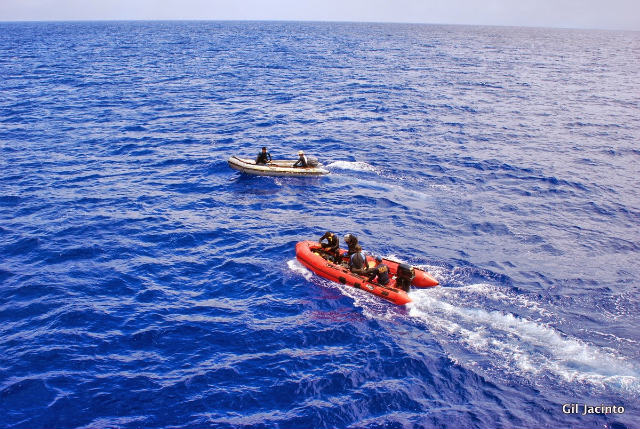
MANILA, Philippines – While China blocks the Philippines from reaching disputed territories in the West Philippine Sea (South China Sea), a group of Filipinos conquered the virgin, crystal-clear, and coral-rich depths of the newest part of their country.
For the first time, Filipinos reached the shallowest portion of Benham Rise, the underwater plateau off the coast of Aurora that the Philippines fought for – and won – before the United Nations (UN). (READ: Benham Rise: PH’s new territory off Aurora)
The leader of the Department of Science and Technology’s Benham Rise Program, Dr Cesar Villanoy, said the expedition was like the one by Ferdinand Magellan, the Portuguese explorer who discovered the Philippines for Westerners in 1521.

“It felt a lot like what Magellan felt. It was exploring. Being able to touch Benham’s bottom was very exciting for many of us,” said Villanoy, a professor at the University of the Philippines Marine Science Institute (UP-MSI), in an interview with Rappler.
Bigger than the Philippines’ biggest island, Luzon, the 13-million-hectare Benham Rise is now part of the Philippines’ continental shelf – an underwater area rich in resources such as minerals and natural gas.
While most of it remains unexplored, Benham Rise is believed to contain steel-producing minerals and natural gas, which the Philippines can even export.
Risky trip
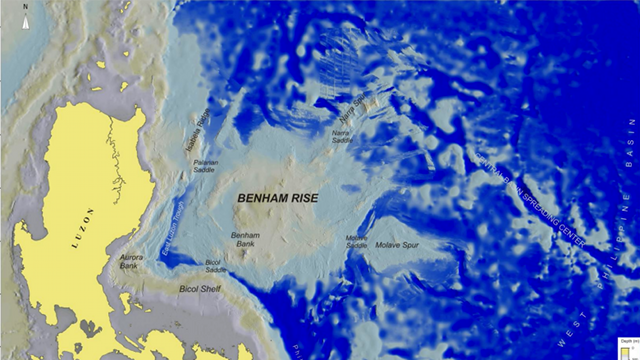
The UN Commission on the Limits of the Continental Shelf approved the Philippines’ undisputed claim to Benham Rise on April 12, 2012.
This is the Philippines’ first validated claim under the United Nations Convention on the Law of the Sea, which the Philippines also invokes in its historic case against China.
It took two years after this for Filipinos to dive into Benham Bank, the underwater plateau’s shallowest portion that is 50 meters deep.
Their mission: to see if the Benham Bank, as well as the waters around it, is “biologically productive.”
Biological productivity, Villanoy said, essentially points to the water’s capacity to support organisms.
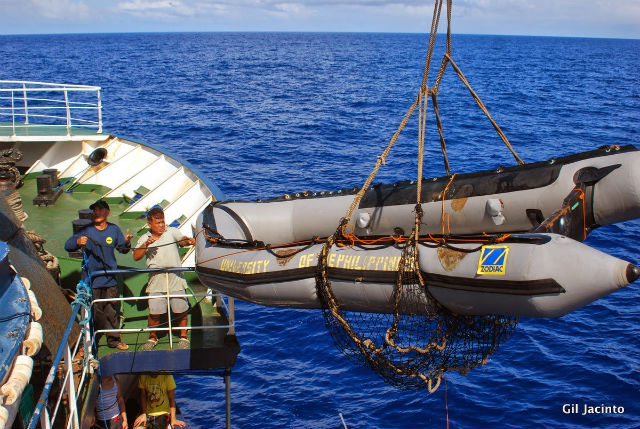
For this unprecedented project, a team of 28 researchers and divers embarked on a two-day journey to Benham Rise on May 3. They boarded a research vessel owned by the Philippines’ Bureau of Fisheries and Aquatic Resources (BFAR).
Villanoy and the leader for this survey, Dr Hildie Nacorda of the UP Los Baños School of Environmental Science and Management (UPLB-SESAM), spearheaded the activity. Researchers from the UP-MSI, BFAR, UPLB-SESAM and Institute of Biological Sciences, UP Mindanao, UP Baguio, and Xavier University, as well as students from the Ateneo de Manila University and UP-MSI, joined the risky trip.
Using a GoPro
Their “main concern,” Villanoy said, involved the depth of the sea.
The 50-meter-deep Benham Bank, after all, goes “beyond the normal depths for scuba diving,” which is around 30 meters.
The team had to assess the dive site first. From their ship they lowered, using weights, a GoPro mini-camera into the sea. To this they attached a dive computer, which measures the depth of the sea, to help ensure the divers’ safety.
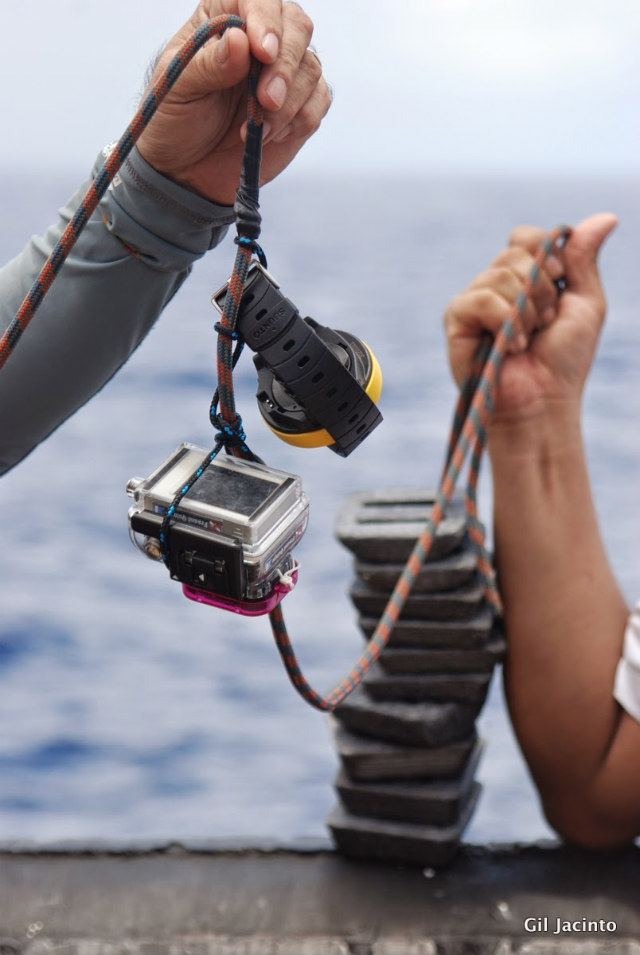
They didn’t even know if the GoPro would make it; they thought it could take a depth of only around 40 meters. (It turned out the GoPro they used could take a 60-meter depth, but Villanoy learned this after their trip.)
“The first time, it was a risk we took. But when we saw it could be done, we became more confident,” he said.
They did their first dive in the morning of May 6. Two of their most experienced divers did it.
Holding on to a line anchored on their ship, the divers braved the strong currents and dove 50 meters deep. They stayed at that depth for only 5 minutes. Then, for the next 30 minutes, the divers slowly ascended back to the surface.
They did the dives every other day.
In between, the team collected water samples to analyze nutrients, among others.
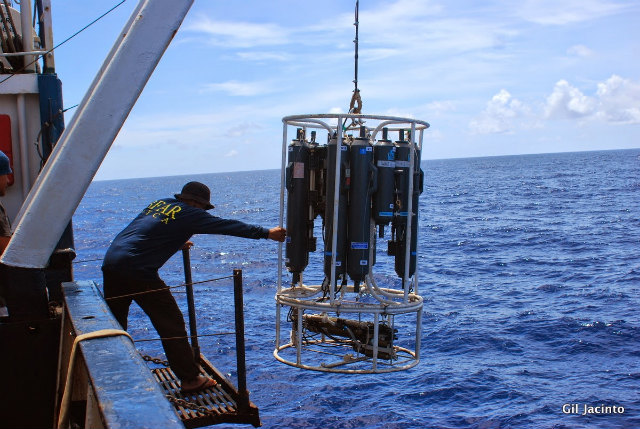
‘Extensive’ corals
This expedition, which lasted from May 6 to May 16, yielded never-before-seen videos and photos.
“We were surprised at how extensive the corals are. But surprisingly, the fish are few. So there are many corals, few fish…. We were also surprised about the clarity of the water. It was very clear from the surface; you could see the bottom, at 180 feet,” Villanoy said in a mix of English and Filipino.
(Watch the underwater video courtesy of UPLB-SESAM’s Dr Hildie Nacorda below)
While he has seen many other seas, Villanoy, who holds a doctorate in physical oceanography from the University of Sydney, said the area is definitely unique.
He said it is, after all, the deepest that Filipino divers have explored in Philippine seas. “We don’t know much about the deeper areas in the Philippines.”
There is much more to explore.
Villanoy explained the team did 5 dives only for around 5 minutes each, at least in the lowest part they reached – a total of around 25 minutes.
To begin with, the 50-meter-deep site they explored isn’t even one-fifth of the plateau’s depth.
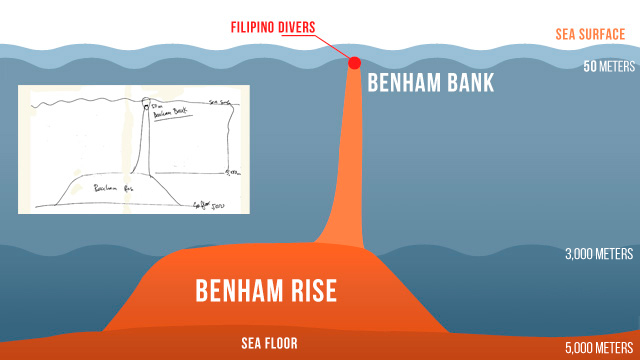
Villanoy said the main plateau from which the Benham Bank protrudes is 3,000 meters deep. The depth of the sea floor is 5,000 meters.
It will “definitely take several years” to complete a more substantial study.
“Going out to these deep water areas is very expensive, and you need specialized equipment and specialized people to be able to study those areas. Maybe the government should also support marine research even more,” Villanoy said.
Since they’re “barely scratching the surface,” the scientist said it could be much richer in “fisheries and geological resources.”
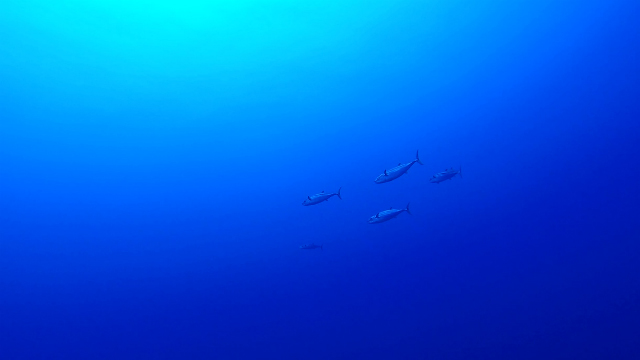
On the other side of the Philippines, China claims the same things. Benham Rise is out of China’s reach. – Rappler.com
Add a comment
How does this make you feel?
There are no comments yet. Add your comment to start the conversation.